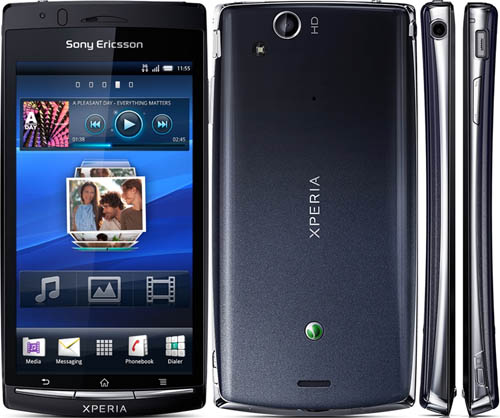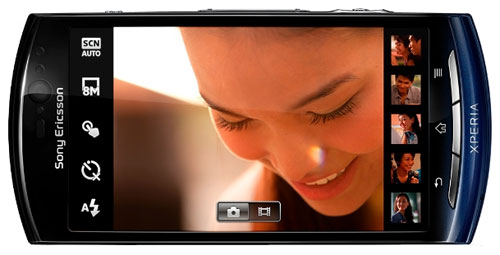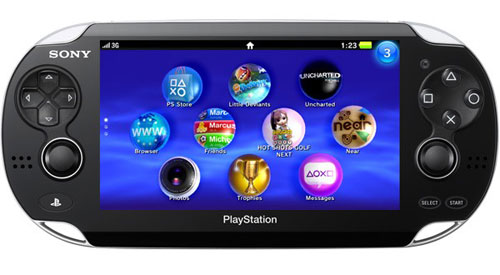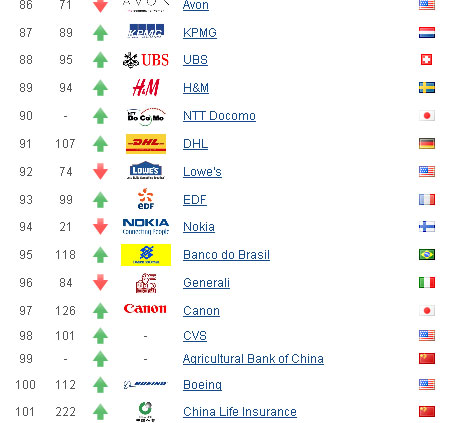Spillikins #114. Country of origin myths or Oh, It's made in China
The last week was eventful Ц I can hardly remember this much activity from cell phone manufacturers so a few topics were not included in this issue of the Spillikins. Briefly: Samsung has upped the Galaxy S II processor to operate at 1.2GHz (the processor, however, can work at up to 1.8GHz). This is good news but it was done merely to have comparable specs with HTC Sensation. Unfortunately, Artem Lutfullin will not be able to make it to London to the HTC press event (embassy business) but I assure you that we will be keeping you up to date. Now back to the Spillikins.
Contents:
- Prejudicial Myths. The Country of Origin Myth Illustrated by China
- Delays with Sony Ericsson NEO and Shortages of Arc and Play
- Impressions from Sony Ericsson Play
- The Value of Nokia Brand is Lower Than That of HTC
- Microsoft Has Another "Good" News for the Users of Windows Phone 7
Prejudicial Myths. The Country of Origin Myth Illustrated by China
One of the most resilient myths on the market of consumer electronics suggests that products manufactured in China are drastically worse than those manufactured in, let's say, Malaysia, Taiwan or Singapore. This myth dates back to the time when Europe and other markets were overrun by the first wave of consumer electronics from China that started in 1990-s: very cheap devices in unpretentious plastic bodies that very often had famous brand names on them. No one was expecting quality Ц the only perk they had was the price. I must add that even if the Chinese wanted to produce quality stuff they would have failed Ц back then China did not have the necessary technologies (plastics, molding presses, production lines) or the expertise (production lines staff, engineers, designers).
But in a decade China made a breakthrough in quality and quantity. By creating free economic zone China managed to attract most of consumer electronics manufacturers from around the world with cheap labor and fiscal privileges. Today European, American and even Korean manufacturers operate in China for reasons mentioned above. The result? The result is that as far as one brand is concerned, Sony for example, there is absolutely no difference where the products are manufactured: Malaysia or China Ц the quality is the same. It is achieved by simply following the production manuals and testing vreating a quality standard (you can offer come across "ISO certified" which stands exactly for the quality standard).
The goal of any manufacturer is to follow the quality standard regardless of the factory. Moreover, all the parts of a single device are all the same at any factory with almost no exceptions. All this allows you to create identical products and quality issues usually arise due to improper factory quality control or faulty production lines Ц the ubiquitous human factors.
Another example, when Nokia opened a cell phone factory in Hungary the number of defective handsets exceeded the average for the company. This was due cheap and incompetent labor. The production line is automatic and foolproof and for it to malfunction someone has to create a malfunction Ц which was done by the maintenance staff. This is where the quality control should have intervened by stopping the production. This, however, was not done since the factory was new and the competence of the production line staff left much to be desired. When the company started receiving negative feedback they just brought staff from other factories who launched the production properly. It is only the human factor that can affect the quality of the end product.
One could think that my human factor argument implies bad quality of products from Chinese factories. Many would turn to the stereotype saying that Made in China products cannot be of good quality. But the statistics does not lie. It is the Chinese factories that lead in terms of quality Ц China is the world number 1 concerning quality. There is, however, a confusion about what is a Chinese product.
I will draw an analogy. You come to Paris and visit Grand Opera. You are positively delighted by the solo of a Parisian diva and you share this impression with your friends in Twitter. The French opera from now on has a positive image for you and you readily recommend it to everyone you meet. Meanwhile, a friend of yours returns from France and tells you that he positively hates the French opera and that he could not imagine a spectacle duller. You begin to inquire and learn that your friend has visited a provincial opera that was horrid. It is a French opera but another level of it. I could provide millions of similar examples: just compare the food in a three star restaurant in the capital and a fast-food drive-in on a highway Ц both are in the same country.
We are tricked by the Made in China stereotype and we associate everything Chinese with the devices that used to break down immediately after the purchase. This attitude has been very slowly changing in the recent years. You should always draw a line between Chinese products manufactured by major international companies that guarantee the quality and tiny Chinese cottage industry. Both are Chinese and will have Made in China on their products but the quality will differ dramatically.
There is another facet of this myth Ц the country of origin. Recently I have come across an online store that offered two variants of all products: from Chinese factories and from other countries (Japan, Taiwan, the US etc.). They even offer lower prices for Made in China goods e.g. HTC Incredible S from a "Chinese factory" for И425 and И500 for the same phone from Taiwan. The thing is, that despite a factory in China HTC has not produced a single Incredible S until the last week all the production of this model was exclusively on Taiwan. The HTC has officially confirmed that all the phones on the market are from the Taiwanese factory. Canon was also surprised to hear that there is production of Canon 7D and other mirror cameras in China since it is only manufactured in Japan. As a matter of fact, if such devices have a Made in China sign it means they are counterfeit.
The above mentioned online store offers "Chinese" variants for a reason. The vendors exploit the myth that Chinese goods are worse even if they are manufactured by big companies. They say that same devices manufactured in China have a poorer quality, often defective and that it is worth paying more for the "real thing". The truth is, they cannot possibly have any "Chinese variants" as in case with HTC Incredible S Ц it is only manufactured on Taiwan. Usually the buyer does not get a cheaper equivalent as the retailer simply says that they have run out of the "Chinese equivalents" or if they do not it means that they are selling counterfeit devices unlicensed for your market. Or in some cases you win the lottery and get the real thing (usually if it is real it is used or has some defects). This is an example of how to create a flourishing business on the stereotypes that Made in China is bad. But the quality of a product does not depend on the country of origin but on the manufacturer and the quality standards.
So, when assessing a product of a major manufacturer you should not jump to conclusions based on the country of origin. If a product is relatively new on the market you won't find any good reviews concerning its quality. If a product has been out for a while you may come across reviews saying that Made in China products are more liable to break down. This is our collective unconscious Ц we blame China since our minds associate China with bad quality Ц which is not true. I hope I will succeed busting this myth.
Other myths:
Back to the table of contents >>>
Delays with Sony Ericsson NEO and Shortages of Arc and Play
Sony Ericsson gave a detailed account of losses due to the earthquake in Japan. Sony Ericsson Arc and Xperia Play, which have just hit the shelves, will not be offered in planned quantities and we expect some shortages for the models. Initially Play had to be introduced at the end of May or beginning of June, but it was launched in April as at the end of 2011 a new PSP from Sony will emerge and Xperia Play could become obsolete. Sony Ericsson tried to win every single day. The earthquake and subsequent delays in the shipment of components made those plans unrealistic. It is a considerable setback for the company, but as both models are not very popular it is a blessing in disguise. SE will not produce enough phones to saturate sales channels and the case of Sony Ericsson X10 will not be repeated. First weeks of sales for Arc show a relatively low demand, which is twice lower than comparable results for Sony Ericsson X10 at the moment of launch. The reason is that owners of X10 experienced the absence of support, while the market had more interesting solutions appearing every coming day. Sony Ericsson became anxious, started adding multitouch to the screen devoid of necessary hardware features and then updated the software. In other words the support of the flagship model was delayed. There is no use in such activities and they only neutralize public opinion blaming Sony Ericsson for the absence of products support. Now they can say that it is not true and the company supports even old models like X10. It used to be their flagship model and still deserves a certain level of reverence. Consumers should think that further models will get this support as well. This PR event has no business element and it is not going to be used for future products.

Now let's mention Neo, which will play in the mid price segment. It offers average features, but it had to be a key player in the Sony Ericsson portfolio. Neo was destined to replace Vivaz and at the same time generate the lion's share of income for the company. Sales figures had to be impressive too. The markup is lower in comparison with Arc, but higher volumes could have offered a panacea for Sony Ericsson. The model is not ideal in terms of characteristics and its price of И350 is not the most attractive. Nevertheless, SE planned to enjoy strong sales here.
Unfortunately, the release of NEO was moved from the end of April to the beginning of June, which has been officially confirmed by the company. There is a faint hope that the model can appear earlier if Sony Ericsson manages to find other manufacturers to provide necessary components. We cannot take it for granted though. If NEO indeed appears in shops around June its price must be lower (no more than И280-300). We can even expect lower prices as current flagships from rival companies (for example, Galaxy S in different versions) will cost less by then. In other words, a natural calamity in Japan will be instrumental in many tribulations for Sony Ericsson in the second part of 2011. If before only the management of the company was to blame, now SE can rue their bad luck and natural disasters.

Back to the table of contents >>>
Impressions from Sony Ericsson Play
There are hundreds of reviews available and first of them started to appear even before the official release of the model. I like the idea and the phone is a good example of Sony Style. Another thing is that the model is unlikely to have any market prospects. Only occasional purchases will be on the cards. It is too early to label it as a breakthrough solution for mobile phones.
Unsurprisingly, the lack of success of any gaming phone must be explained by the success of game consoles and PSP is a prime example of the trend. At the end of 2011 we will receive two versions of new PSP (codenamed NPG (PSP2). A WiFi version will cost $250, while a 3G will set you off around $350.

Compare consoles with Sony Ericsson Xperia Play in terms of price. The phone is a clear loser here with its price of И550. Two times more expensive, but technologically Xperia Play is much weaker. Think about the following. It features a one core processor instead of a quad core in PSP; its TFT screen has only 4&Pride;, which cannot compete with a 5&Pride; OLED featuring a superior 960х544 resolution. PSP has better video accelerator and more 3D motion sensors. It is a foregone conclusion as the console wins both on price and gaming features, which is of utmost important for consumers.
It's a pity, but Play is a standard Android smartphone devoid of innovations apart from gaming keys and sensor panels. The screen is two generations away from the current cutting edge. It even has an air layer, which reveals an inexpensive matrix inferior to an already average screen in Arc. Viewing angles are not impressive, so you will find it difficult to show your friends how good you are.
Performance speed is not a class leading and the number of available games is limited to 60. Many of them can be tried on usual Android smartphones, though Play will offer better gaming experience courtesy of dedicated keys.
As far as I have played with PSP quite a lot and purchased around three dozens of UMD disks I have some experience worth mentioning. Play uses a carbon copy of Playstation philosophy, so you will figure out the rules of operation in no time. Due to the size of the phone key ergonomics is rather average, both parts of the slider are not balanced enough and after some time your arms can get tired. It is the best gaming phone, nonetheless. So decide for yourself.
As the first product in its class it has to be expensive. Who will buy it? Young people from rich families will feature prominently here. The model is not ideal, but there are no rivals and for some people the price does not matter much. The purchase cannot be considered rational, but it would be easy to replace it in the future without regret. People who do count their money can win too if а) they have never had a good touchscreen model; b) there is a desire to have both a phone and a console, while consumers had no experience of PSP.
The main issue with Play will be its price. It could have enjoyed moderate sales at the price of И400. Sadly, the price will scare the major share of potential consumers. The appearance of PSP2 will make Xperia Play redundant. We see another king of the day, which will be forgotten soon, despite several interesting solutions. A detailed account of gaming and other issues will be available this week in our review. If you have any questions feel free to ask them on our forum.
Back to the table of contents >>>
The Value of Nokia Brand is Lower Than That of HTC
Every week Nokia gets another portion of bad news, facts and figures, which show a suffering giant from Finland. According to Bloomberg the market capitalization of HTC overtook that of Nokia on April 7, 2011 ($33.8 billion against $32.84 billion for Nokia). It is a good example of the trend when HTC goes up on the Android wave and Nokia loses out together with Symbian. The success of HTC is not surprising and does not mean it is superior/inferior to Nokia, but the market believes more in its future success.
The full text is available here.
Another interesting point is the value of the brand. Interbrand has not provided data for 2010 yet, but Nokia clearly went down last year. We already have an assessment from Branddirectory. According to their ranking during one year Nokia lost 73 positions and dropped from place 21 to 94. Are there still any questions about the origin of negative tendencies? /p>
The full ranking can be accessed here.

Another piece of news was almost overlooked. Nokia is no longer opening source codes for Symbian and it cannot be considered open source now. It is another stepping stone in the demise of Symbian, which was always quite clear after the alliance with Microsoft was unveiled.
I will add some more information about the screen defects in Nokia N8/C7, which we have mentioned in Spillikins 110. Detailed explanation is available here.
Nokia have issued their service bulletin and screens can now be replaced free of charged in authorized service centers. The replacement is not available for every model as engineers assess the level of violet color by sight. Officially, Nokia did not confirm this defect and made no announcements. The only piece of official information came from their Russian office, which admits the issue, but tries to downgrade its importance:
"We have recently come across claims of Nokia N8 and Nokia C7 users regarding the violet color being too conspicuous in their gadgets. Nokia is aware of it and is trying to analyze the question.
Traditionally, every screen has a slight variation of violet color, which is connected with the fine-tuning of screens at manufacturing facilities. Some Nokia C7 and Nokia N8 devices shipped to Russia have a more prominent violet color than usual.
If you have any questions about this issue feel free to contact the nearest service center where your phone will be fixed in accordance with your guarantee if the center confirms the defect. Nokia is apologizing for any inconvenience. We have to mention that the issue does not affect the performance of abovementioned models".
Microsoft Has Another "Good" News for the Users of Windows Phone 7
Microsoft experiences problems with Windows Phone7 updates. First they had an issue with Samsung models and now comes the case of HTC. It is not that bad for HTC owners. Their models keep on working, but the image quality was downgraded to 16 bit. The explanation must be in drivers as we have no other reason so far. Anyway, look at the picture. It should not look this way and have any edges. The issue is widely spread, but so far we had no official comment from Microsoft.
Voting results are available here.

Do you want to talk about this? Please, go to our Forum and let your opinion to be known to the author and everybody else.
Back to the table of contents >>>
Related links
Eldar Murtazin (eldar@mobile-review.com)
 Twitter Twitter  Livejournal Livejournal
Translated by Maxim Antonenko (maxantonenko@ukr.net)
Published — 14 April 2011
Have something to add?! Write us... eldar@mobile-review.com
|









